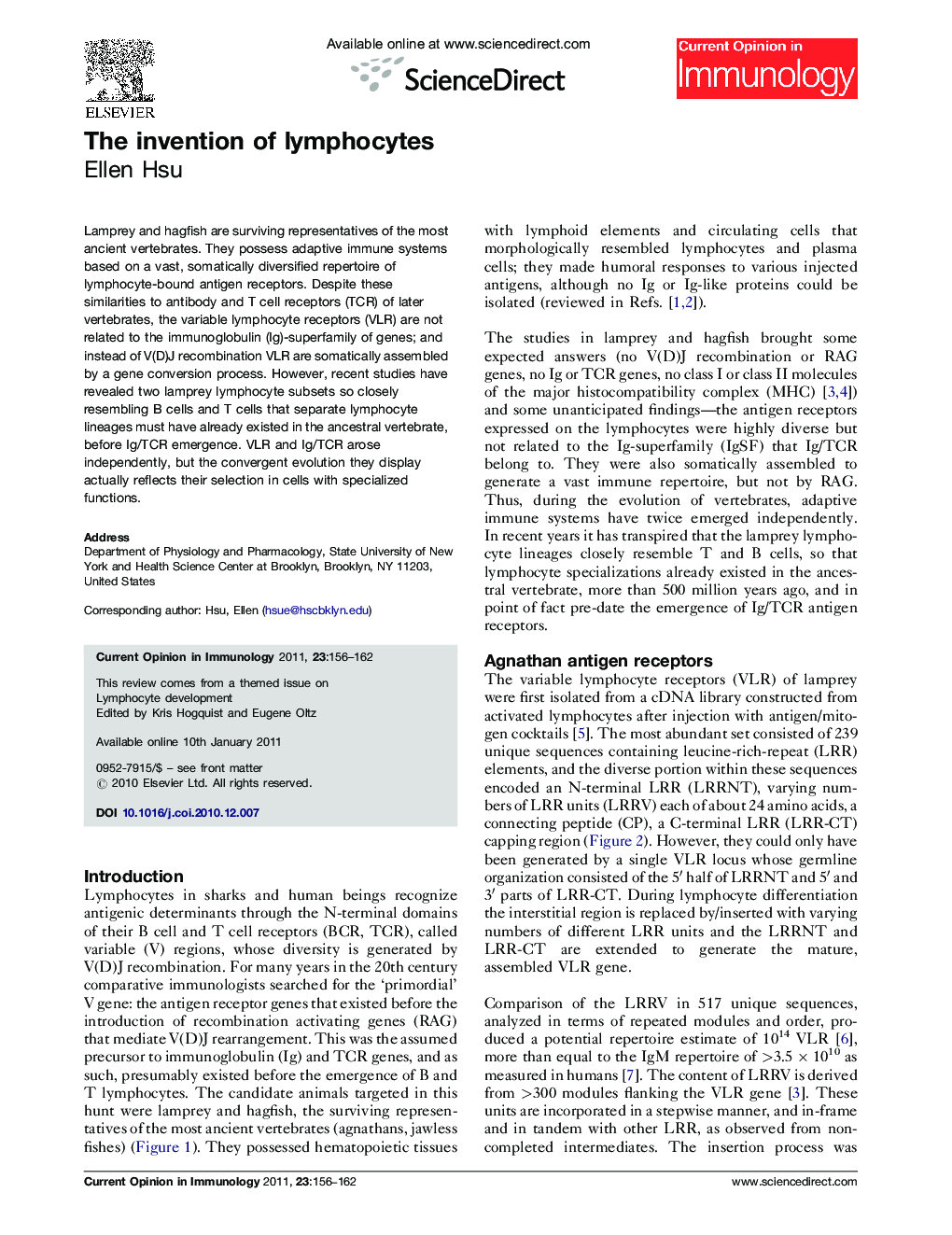| Article ID | Journal | Published Year | Pages | File Type |
|---|---|---|---|---|
| 3346009 | Current Opinion in Immunology | 2011 | 7 Pages |
Lamprey and hagfish are surviving representatives of the most ancient vertebrates. They possess adaptive immune systems based on a vast, somatically diversified repertoire of lymphocyte-bound antigen receptors. Despite these similarities to antibody and T cell receptors (TCR) of later vertebrates, the variable lymphocyte receptors (VLR) are not related to the immunoglobulin (Ig)-superfamily of genes; and instead of V(D)J recombination VLR are somatically assembled by a gene conversion process. However, recent studies have revealed two lamprey lymphocyte subsets so closely resembling B cells and T cells that separate lymphocyte lineages must have already existed in the ancestral vertebrate, before Ig/TCR emergence. VLR and Ig/TCR arose independently, but the convergent evolution they display actually reflects their selection in cells with specialized functions.
